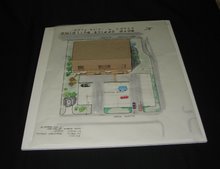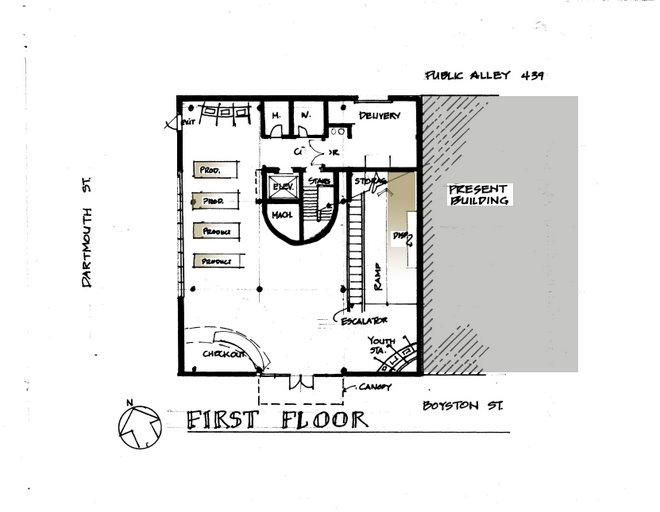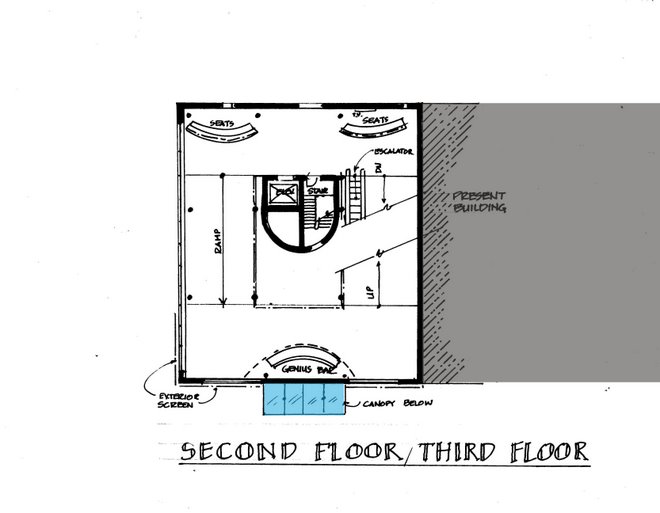The civic responsibility of Architects today has moved beyond the mear application of skills to civic structures and benevolence in the workplace. Architecture ,and modern architects in particular, are taking proactive roles in the outcome of the built environment. One of the more specific avenues of application is by using "Green" design.
The application of certification standards of the Green Building Council provides an outline to an approach to design in a responsible manner. This approach to building is a minimum standard and can serve as springboard for real "green" design. And when we talk about green design, we are talking about something that makes little or no impact in its creation and maintenance. Since Olglevay proposed a solar envelope and documented his findings, the research has been available and awaits the widepread acceptance into the eye of the public. Likewise, the most difficult task is to determine the end result of "greening" of a building.
The primary effort for architects in their civic role must be to take a proactive stance towards building which uses environmentally sensitive approach to design.
And why is this critical? Because our resources are limited and almost 40% of energy consumption is for building use and 40% of the world energy consumption is necessary to construct and maintain the built environment*. What this means is that with ever increasing demand for more constructed and design spaces we must strive to reduce both the wasteful building practices and the provide the responsible stewardship for the future generations. To do this we must shift our role from visionary to a role which engages the collaborative stance when assembling the building team. By bringing experts and associations into a collaborative process a more productive result will be achieved. It has the potentional to engage and gain support of owners. Architects will be returned to the leadership in this effort.
The fundamental questoins that we, as designers, must ask are:
1. What am I using?
2. How well am I using it?
This will be our a task worth our effort and the gift we can leave to posterity. The goal is to go beyond the eco-chic and truely pushes the frontiers of wasteful consumption.
*Nadav Malin, "The group effort"Green Source" November 2006 Vol 47 page 10
Thursday, January 25, 2007
Subscribe to:
Post Comments (Atom)






4 comments:
Green Design can be a "head" issue, intellectualized and held external from us, or it can be a "heart" issue, one that we pursue because of some deep sense of personal responsibility and a strong vision of a desirable community. What you have here is a "head" discussion (and a good one), but I'm going to push you to write the "heart" discussion. It's the four-year-old's question -- "why?" Every time you write an answer, ask "why?" about that answer as well. Eventually, you'll get down to something that you just plain believe. THEN you can begin.
What I see in the entire "green" movement is but a recapitualation of what people have talked about when they discussed the great 1930 Depression. It is an attempt to be reponsible and lead the way back to good design. We have the facts, that construction is one of the most wasteful activities which man does legally. However,by attempting to use recycling or green design as a single issue lends us as a profession to 'Eco-chic'. Are we here to save the world and look look good!?. We, as designers are also the consumers. I believe our role is to design and then delve into the ways we can make that design fit environmentally to ustify the ends. We must be true to ourselves and go forth with bold and unaplogetic designs to lead.
But getting back to the original premise, that nothing is new , only that we have a more sophisticated way of presenting problems and solutions to the genreal public. I feel we have those tools and that the fundamental object to press on with excellent designs.
Let's look at one sentence in the middle of your last post: "I believe our role is to design and then delve into the ways we can make that design fit environmentally to justify the ends." What if you reversed that sentence to say, "I believe our role is to understand environmental sustainability and then to design accordingly." Would that be untrue for you? If so, then you're getting close to a core belief, that design is an act of its own justification and doesn't need to be legitimized by reference to any other end. Is that true for you? Keep diving, and I'll keep pushing you to hit the bottom, the bedrock beliefs that keep you going and make architecture worthwhile.
Herb:
You are absolute right about the core issues. When I currently look at justification, I only feel compromise. Realizing this is something I want in 'design' to rival the scientific and challenge each persons immaginations!
T.
My "hope for my community and how I can effectuate that vision".
Post a Comment